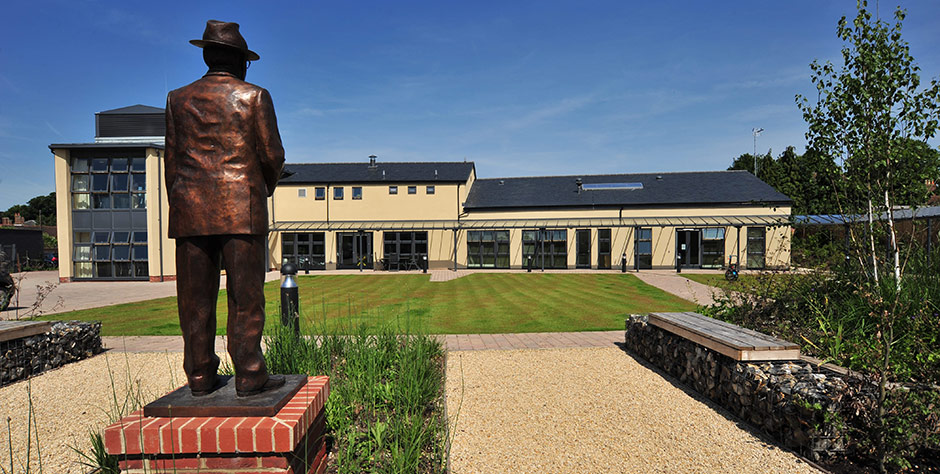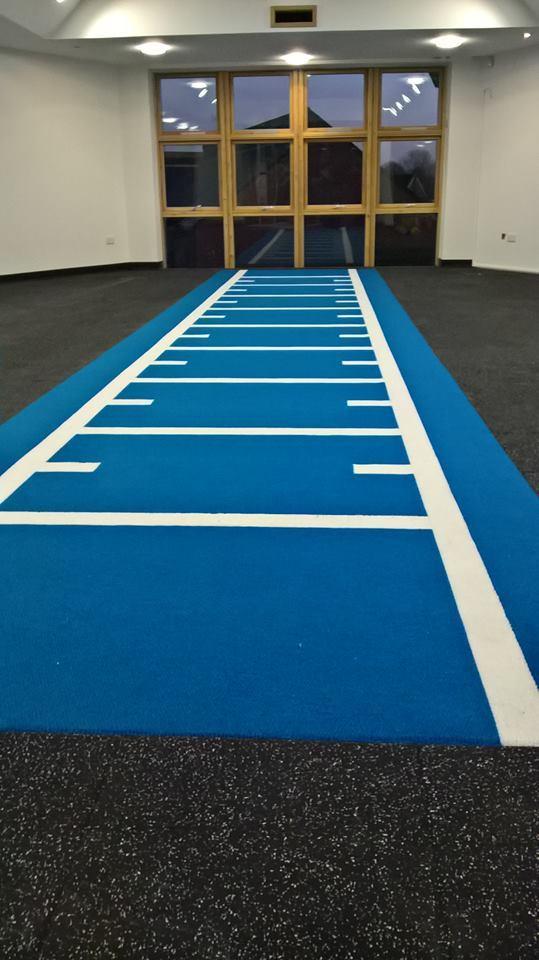Case Study - Injured Jockey Fund
Background
The Injured Jockey Fund (IJF) Oaksey House rehabilitation centre in Lambourn, Berkshire, was opened in 2009 by the IJF Patron, HRH The Princess Royal. Oaksey House provides specialist rehabilitation treatment for physical and neurological injuries, it has a fully equipped gym which includes a state-of-the-art anti-gravity treadmill. The centre has respite accommodation available for those receiving extended treatment and their carers. Educational courses on fitness and nutrition for the general well-being of young and aspiring jockeys are also on offer.

Oaksey House is not only a rehabilitation centre for jockeys, but anyone with physical or neurological injuries. Although the centre was only opened in 2009, it was decided that a refit was required to make improvements to further support the people that pass through its doors. The refit included moving the gym to the first floor and building a hydro pool on the ground floor.

The Challenge
Relocating the gym to the first floor was no easy task, primarily because the building structure was composed of a steel tray and concrete base. To accommodate gym activity, the floor build-up would need to be enhanced to prevent noise and vibrations travelling through the building.
As a charity, the IJF had limited funds to work with, so flooring specialists, Sport & Fitness Flooring, worked with the architect and an independent consultancy to identify an effective solution within the specified budget. Moreover, the floor had to be designed to meet the needs of four distinct areas: a cardiovascular zone, a running track, main gym area and an entrance lobby.
The project was unique because various performance requirements had to be met across the four areas but the floor level needed to be consistent throughout to make it accessible for wheelchair users. Sport & Fitness Flooring consulted CMS Danskin Acoustics - Gym Flooring Division to advise on potential solutions to address this challenge while remaining cost effective.
The Solution
Sport & Fitness Flooring worked with Venta Acoustics and Townscape Architects to undertake on-site subjective / acoustic testing to determine the level of sound reduction and vibration control that would be required. The primary objectives were to prevent vibration travelling into the structure of the building thus resulting in potential structural damage or unwanted noise levels on the ground floor offices and communal areas below.
“Throughout the planning stages CMS Danskin Acoustics acted as a ‘springboard’ for our ideas. They were extremely helpful in offering their expertise to find solutions to meeting the performance requirements of the floor,” said Darren Wood, Director of Sport & Fitness Flooring.
Sport & Fitness Flooring worked with Danskin to identify a way of raising the floor in different areas to meet a consistent 84mm thickness throughout, without having an adverse effect on the acoustic performance of the flooring. A bespoke specification for the four key areas, with solutions was subsequently presented to the architect and approved for use on the project.
The Results
In the main gym area, a high-performance combination of everroll® Multitile was bonded to Acoustic Foam which was in turn bonded to an acoustic underlayment. In the cardiovascular (CV) zone, 27mm Multitile was bonded to a PU anti vibration foam and fitted to ply which was adhered to an acoustic underlayment. The BOK-Systems sprint track built in situ and comprised of an impact pad elastic elastic layer, ply build up and a Regupol® layer. Finally, concrete effect Luxury Vinyl Tiles (LVT) were used to create a purpose-built ramp up to the 84mm floor level from the entrance lobby to allow ease of access for injured clients and those in wheel chairs.
The project finished a week ahead of schedule, on budget and the flooring met all the performance requirements that were specified. Crucially, a consistent floor level was successfully achieved throughout the gym.